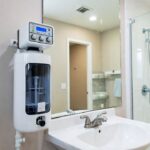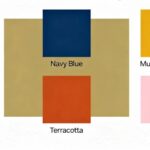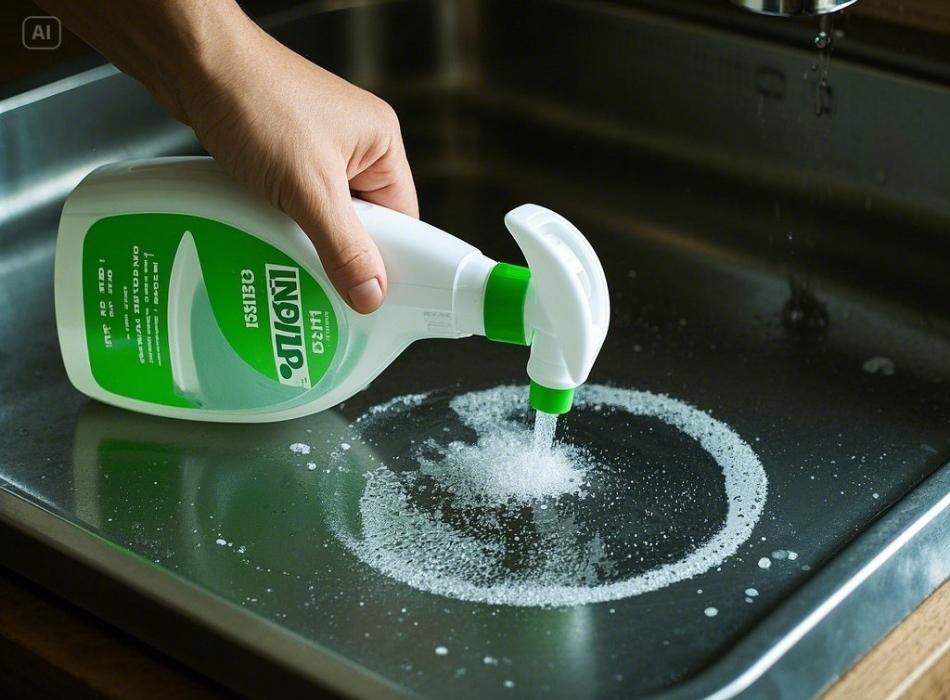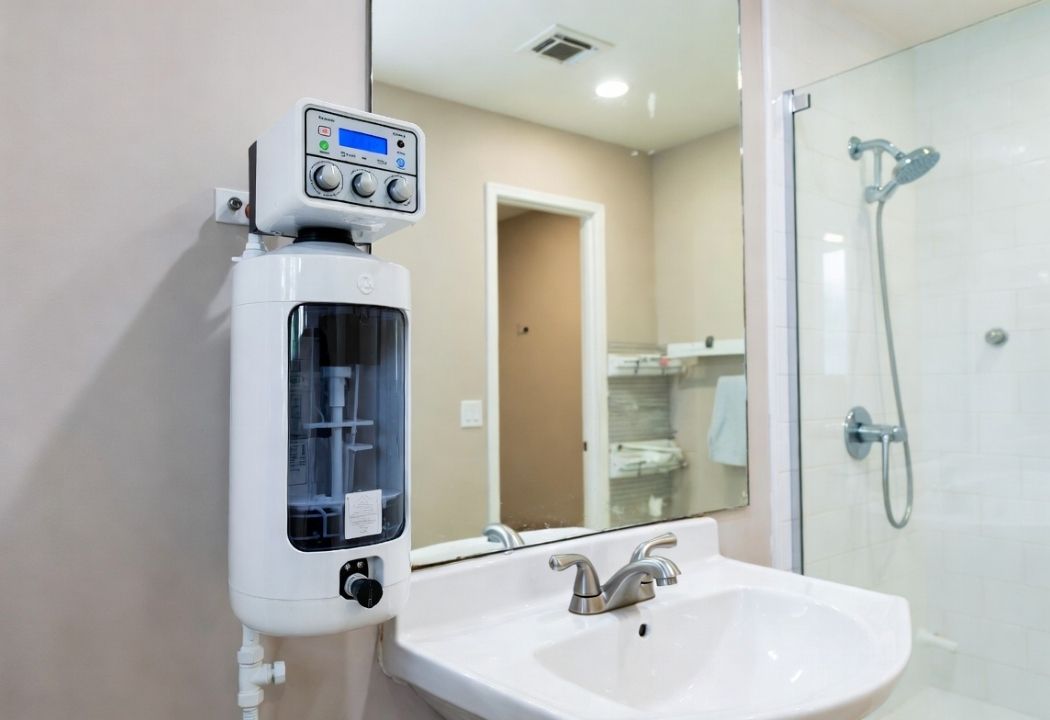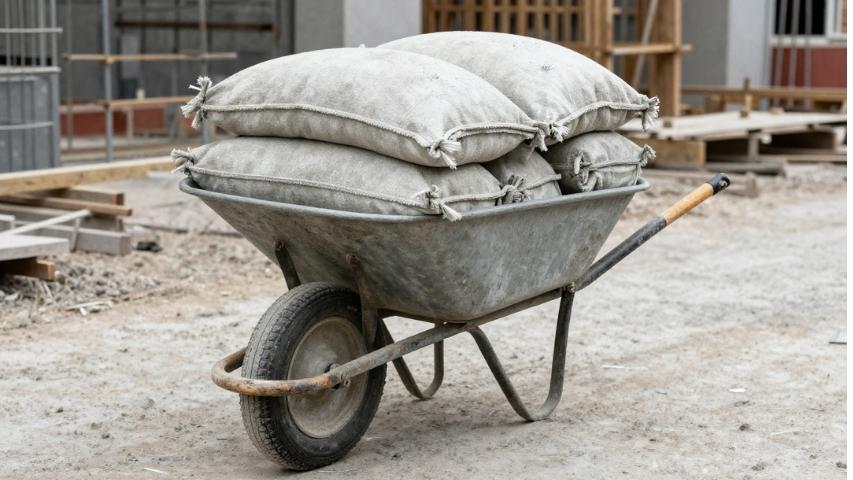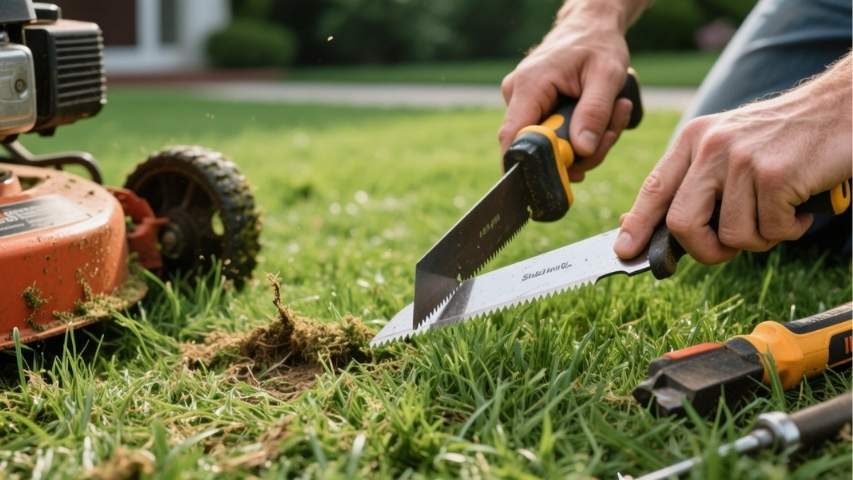Whether you’re preparing walls for a fresh coat of paint or tackling stubborn grease buildup, TSP cleaner is a secret weapon worth adding to your toolkit. Known for its impressive cleaning power and versatility, Trisodium Phosphate (TSP) has been a trusted ally for DIY enthusiasts, home renovators, and cleaning professionals alike.
This guide will cover everything you need to know about TSP cleaner, from its definition and function to its benefits, uses, and safety considerations. By the end, you’ll be ready to use TSP like a pro.
What is TSP Cleaner?
TSP cleaner stands for Trisodium Phosphate cleaner, a heavy-duty cleaning product made of soda ash (sodium carbonate) and phosphoric acid. It typically comes in powder form and is mixed with water to create a cleaning solution.
TSP is known for its ability to:
- Cut through grease, grime, and tough stains.
- Remove mildew and mould.
- Prepare surfaces for painting or refinishing.
- Brighten and deep clean a variety of materials such as wood, metal, and concrete
- It can be used as a heavy-duty degreaser in commercial kitchens and industrial settings.
How to use TSP Cleaner?
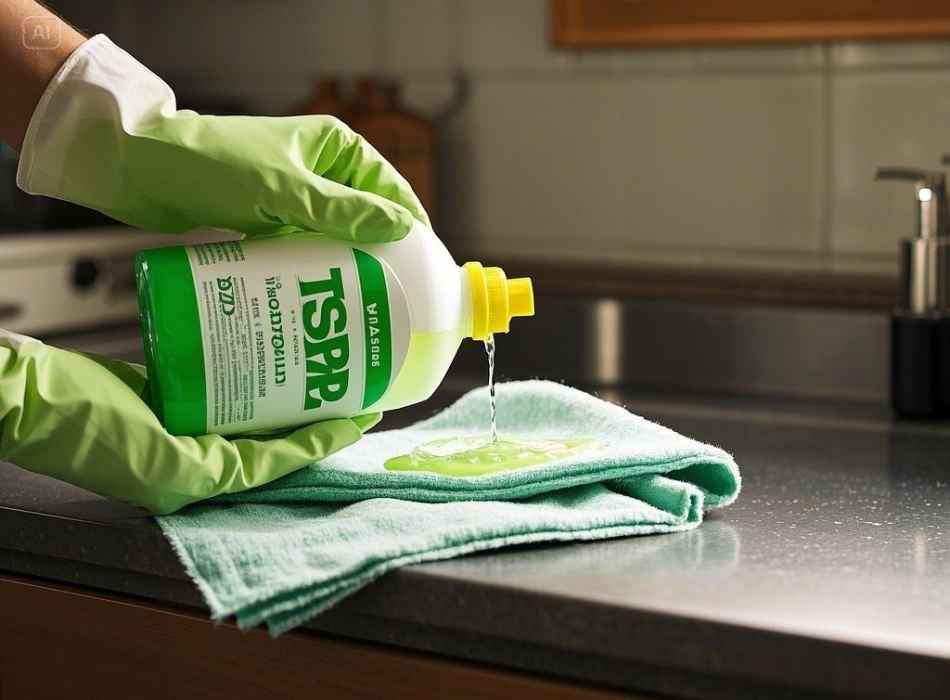
Before using TSP cleaner, it is essential to read the manufacturer’s instructions carefully. Here are some general steps for using TSP cleaner:
- Wear protective gear: Since TSP cleaner is a strong chemical, it is essential to protect your skin and eyes by wearing gloves, safety goggles, and long-sleeved clothing.
- Mix the solution: In a bucket or container, mix one tablespoon of TSP cleaner with 1 gallon of warm water.
- Test on a small area: Before using the solution on the entire surface, it is best to test it on a small, inconspicuous area first. This will ensure that the cleaner does not cause any damage or discolouration.
- Apply the solution: Dip a sponge or cloth into the TSP solution and begin scrubbing the surface. For tougher stains or dirt buildup, you may need to let the solution sit for a few minutes before washing.
- Rinse thoroughly: After scrubbing, rinse the surface with clean water to remove any remaining cleaner.
- Dry and repeat if necessary: Use a clean towel to dry the surface completely. If stubborn stains or dirt remain, you may need to repeat the process.
- Consider preventative measures: To keep your surfaces clean and free of stains, consider using a sealant or wax to protect them from future spills and dirt buildup.
Additional Tips:
- Be sure to test the TSP solution on a small, inconspicuous area first to ensure it does not cause any damage.
- Always wear gloves and protective eyewear when working with cleaning chemicals.
- For outdoor surfaces, use a pressure washer for better results.
- In addition to TSP, there are also other cleaning solutions specifically designed for different types of surfaces, such as wood, tile, or granite. Research and choose the appropriate cleaner for your specific surface before beginning the cleaning process.
- If the surface has mould or mildew, use a bleach solution to kill and remove it before using TSP.
- After cleaning with TSP, rinse thoroughly with clean water and allow the surface to dry completely before applying any paint or stain.
- It is essential to follow the instructions on the TSP packaging carefully, as different brands may have varying dilution ratios and application methods.
- When using TSP indoors, ensure proper ventilation by opening windows and using fans.
- Dispose of any leftover TSP solution properly according to local regulations.
- Store TSP in a tightly sealed container away from children and pets.
Why Choose TSP Cleaner?
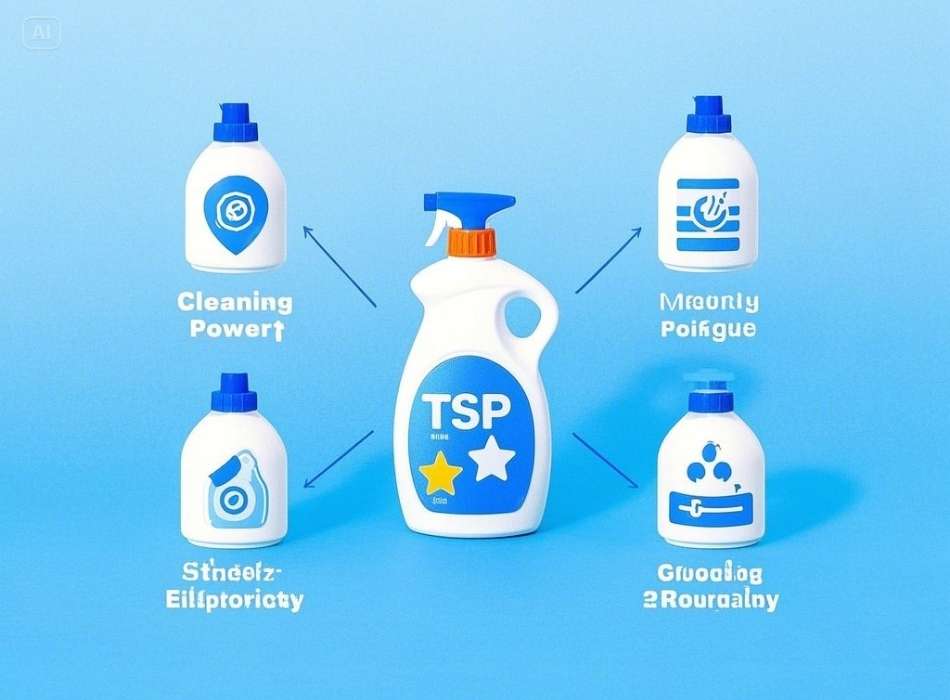
Here are some benefits that make TSP Cleaner stand out from other options:
Powerful Degreaser
TSP is highly effective at breaking down grease and oily residues, making it ideal for cleaning kitchen walls, cabinets, and appliances.
Paint Prep Extraordinaire
Before painting, TSP removes dust, dirt, and surface oils, ensuring your new coat of paint sticks evenly and lasts longer.
Versatile Cleaning Solution
From cleaning smoke-stained walls to removing adhesives, TSP works on many surfaces, including wood, concrete, tile, and metal.
Cost-Effective
A little goes a long way! One container of TSP powder can last through multiple cleaning projects, offering excellent value for its price.
Widely Available
TSP is readily available at most hardware stores, home improvement retailers, and online.
How to Use TSP Cleaner
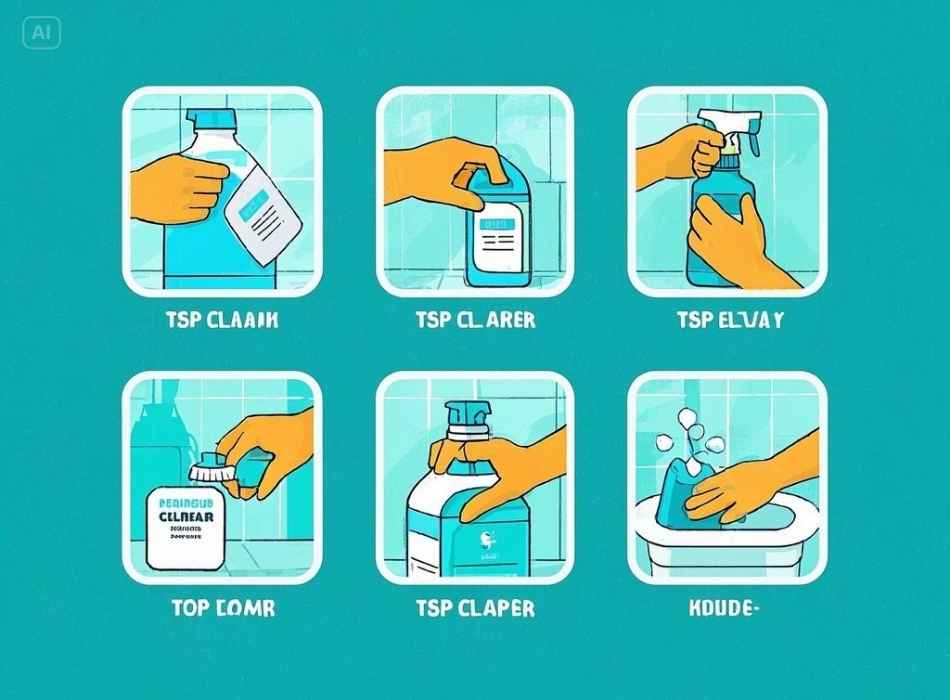
Using TSP cleaner requires careful preparation and adherence to safety protocols. Follow these six simple steps:
Step 1: Gather Supplies
You’ll need:
- TSP powder
- A clean bucket
- Warm water
- Protective gloves
- Safety glasses
- A sponge, brush, or mop
- Drop cloths or towels to protect surfaces.
Step 2: Mix the Solution
Add TSP powder to warm water according to the package instructions. Typically, about 1/4 to 1/2 cup of TSP per gallon of water is needed. Stir until fully dissolved.
Pro Tip: Always add TSP to water (not the other way around) to prevent splashing.
Step 3: Prep the Area
To protect against splashes, cover floors, furniture, and any nearby items with drop cloths or towels. Open windows or use fans to ensure good ventilation.
Step 4: Apply the Solution
Dip your sponge, brush, or mop into the TSP solution and apply it generously to the surface you’re cleaning. Scrub for stubborn spots as needed.
Step 5: Rinse Thoroughly
Leftover TSP residue can prevent paint or finishes from adhering, so rinse the cleaned area thoroughly with water and allow it to dry completely before applying paint or sealants.
Step 6: Dispose Safely
Dispose of any leftover TSP solution responsibly, in line with local waste regulations. Never pour TSP down drains, as it can harm waterways. Instead, allow the solution to evaporate in a well-ventilated area and dispose of any remaining residue in a sealed container.
Where Can You Use TSP Cleaner?
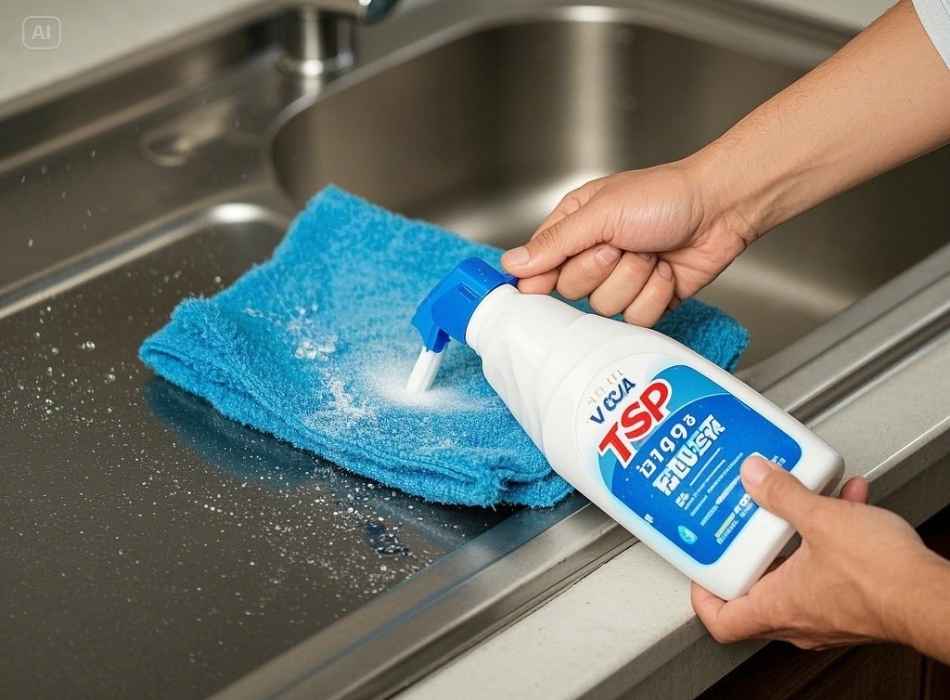
TSP’s versatility makes it suitable for various cleaning and prep tasks, including:
- Walls: Removes grease, fingerprints, and smoke stains to prep for painting.
- Kitchens: Cleans greasy cabinets, range hoods, and exhaust fans.
- Exteriors: Preps siding and fences for painting or refinishing.
- Tile and Stone: Cleans grout lines and removes buildup.
- Furniture: Strips off old finishes before refinishing projects.
- Concrete: Brightens driveways, garage floors, and patios.
Important Note: TSP should not be used on glass, aluminium, or glossy painted surfaces, as it can damage or dull them.
Safety First: Precautions When Using TSP
While TSP cleaner is an excellent tool for tough jobs, it’s essential to handle it carefully due to its chemical composition. Here are some safety tips to follow:
- Wear Protective Gear: Always wear gloves and safety glasses when handling TSP to protect your skin and eyes.
- Ensure Ventilation: Use TSP in a well-ventilated area to avoid inhaling fumes. If you’re working indoors, consider using a respirator mask.
- Follow Instructions: Stick to the recommended mixing ratios and usage guidelines detailed on the packaging.
- Avoid Skin Contact: TSP can irritate the skin, so wash thoroughly if it comes into contact with your hands or body.
- Store Safely: Keep TSP in a secure, dry location, away from children and pets.
Eco-Friendly Alternatives to TSP Cleaner
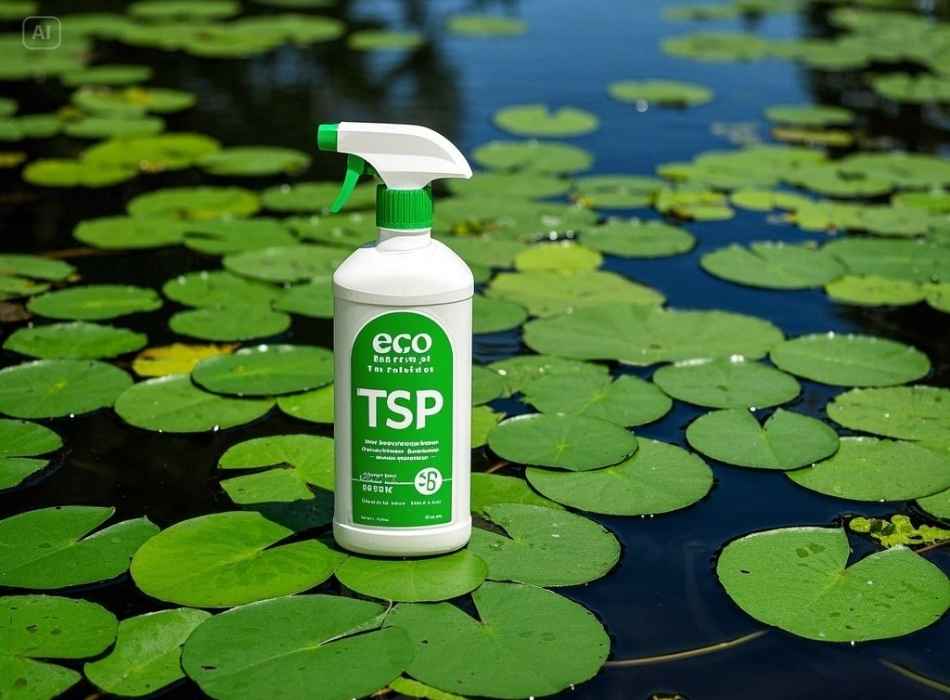
While TSP is highly effective, its phosphates can contribute to water pollution, causing algae blooms in local waterways. If you prefer an eco-friendly alternative, here are some options:
- TSP Substitute Products: Many hardware stores offer phosphate-free versions of TSP that work just as effectively but are safer for the environment.
- DIY Solutions: For lighter cleaning tasks, mixtures of baking soda, vinegar, or castile soap may suffice as natural alternatives.
- Non-Toxic Cleaners: Brands like Simple Green and Krud Kutter offer sustainable, heavy-duty cleaning solutions without harsh chemicals.
- Microfiber Cloths: These reusable cloths are made from synthetic fibres that effectively clean surfaces without the need for chemicals. They can be washed and reused multiple times, reducing waste.
- Biodegradable Sponges: Look for sponges made from natural materials such as plant cellulose or loofah that can break down easily in landfills.
- Natural Brushes: Instead of using plastic brushes for scrubbing, consider using natural alternatives like coconut fibre or bamboo bristle brushes.
- Steam Cleaning: Steam cleaning uses hot water vapour to clean surfaces effectively without the need for chemicals. This method is not only environmentally friendly but also kills bacteria and allergens.
- Eco-Friendly Products: There are now many eco-friendly cleaning products available in the market that are made from natural, biodegradable ingredients and come in recyclable packaging. Look for these alternatives instead of traditional chemical-based cleaners.
- DIY Cleaning Solutions: You can easily make your cleaning solutions using ingredients you already have at home, such as vinegar, baking soda, and lemon juice. These solutions are effective in removing dirt and grime without harming the environment.
Is TSP Cleaner Right for Your Project?
If you’re tackling heavy-duty cleaning or prepping a surface for painting or refinishing, TSP is hard to beat. Its potent cleaning power and proven effectiveness make it a go-to choice among DIYers and professionals. However, always weigh the environmental impact and safety requirements based on your specific needs.
For those looking for an all-around cleaner that’s cost-effective and easy to use while delivering professional results, TSP Cleaner might be the perfect addition to your cleaning arsenal.
Get Started on Your Next DIY Project
Now that you know how to use TSP cleaner, it’s time to take your next cleaning or renovation project to the next level. Whether you’re refreshing your kitchen walls or prepping furniture for a makeover, TSP can make the tough jobs easier.
Do you have questions about TSP cleaner or want more tips? Comment below or share your favourite cleaning hacks—we’d love to hear from you!

